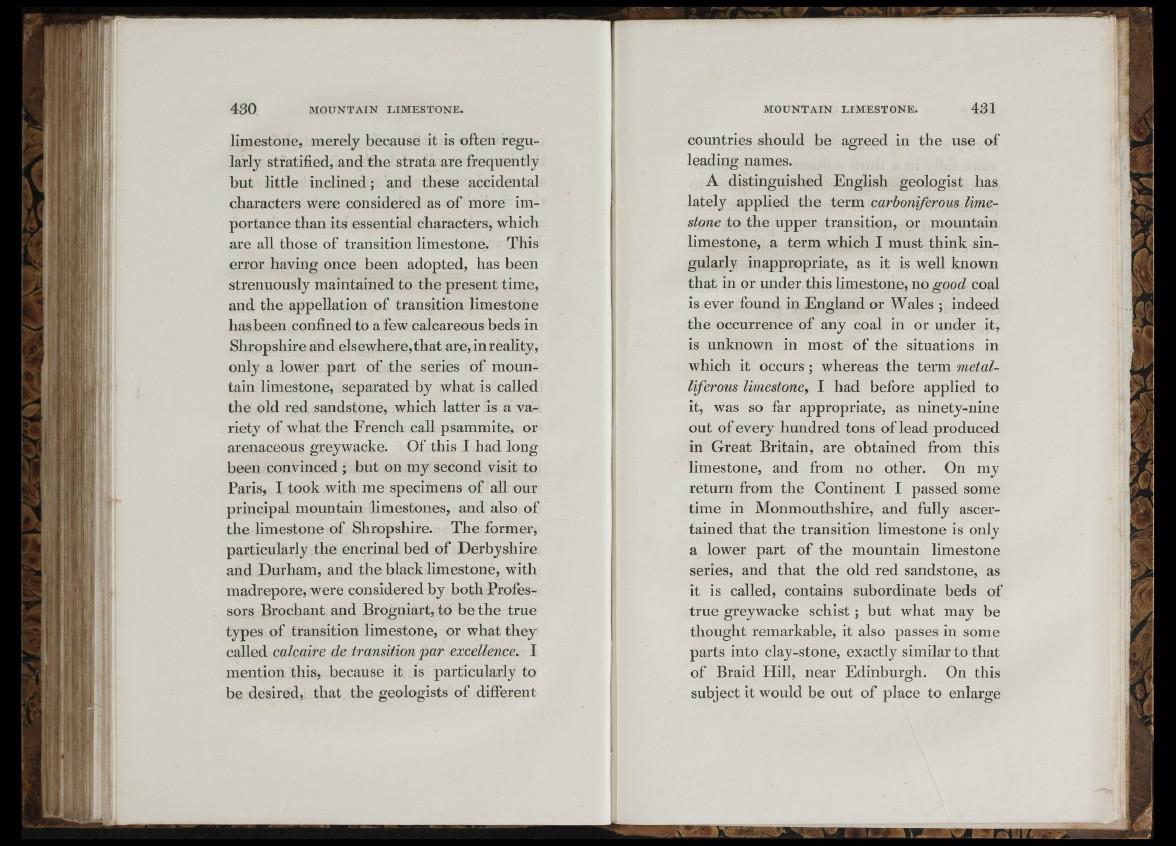
l■ihliilii
!il
430 MOUNTAIN LIMESTONE. MOUNTAIN LIMESTONE. 431
i i
I® -iii
limestone, merely because it is often regularly
stratified, and the strata are frequently
but little inclined; and these accidental
characters were considered as of more importance
than its essential characters, which
are all those of transition limestone. This
error having once been adopted, has been
strenuously maintained to the present time,
and the appellation of transition limestone
has been confined to a few calcareous beds in
Shropshire and elsewhere,that are, in reality,
only a lower p a rt of the series of mountain
limestone, separated by what is called
the old red sandstone, which latter is a variety
of what the French call psammite, or
arenaceous greywacke. Of this I had long
been convinced ; but on my second visit to
Paris, I took with me specimens of all our
principal mountain limestones, and also of
the limestone of Shropshire. The former,
particularly the encrinal bed of Derbyshire
and Durham, and the black limestone, with
madrepore, were considered by both Professors
Brochant and Brogniart, to be the true
types of transition limestone, or what they
called calcaire de transition par excellence. I
mention this, because it is particularly to
be desired, that the geologists of different
countries should be agreed in the use of
leading names.
A distinguished English geologist has
lately applied the term carboniferous limestone
to the upper transition, or mountain
limestone, a term which I must think singularly
inappropriate, as it is well known
that in or under this limestone, no good coal
is ever found in England or Wales ; indeed
the occurrence of any coal in or under it,
is unknown in most o f the situations in
which it occurs; whereas the term metalliferous
limestone, I had before applied to
it, was so far appropriate, as ninety-nine
out of every hundred tons of lead produced
in Great Britain, are obtained from this
limestone, and from no other. On my
return from the Continent I passed some
time in Monmouthshire, and fully ascertained
that the transition limestone is only
a lower part o f the mountain limestone
series, and that the old red sandstone, as
it is called, contains subordinate beds of
true greywacke s c h is t; but what may be
thought remarkable, it also passes in some
parts into clay-stone, exactly similar to that
of Braid Hill, near Edinburgh. On this
subject it would be out o f place to enlarge